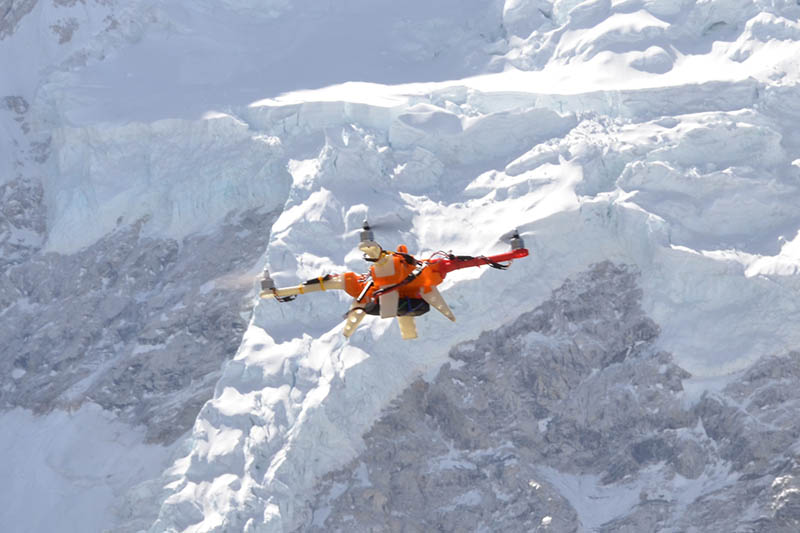Test flight of medical drones to begin from mid-April
- The drones will be connected to the nearest hospitals
Kathmandu, March 30
Carrying medical supplies to remote areas by unmanned aerial vehicles – delivery drones – will soon be possible in Nepal.
Mahabir Pun and his team of 16 young engineers are giving final touch to the two models of the home-made prototypes — an octocopter and a fixed-wing drone. “Both the drones will be put to test flights by mid-April,” said Pun.
Octocopters are designed to fly short distances that cover a radius of 10-12 kilometres while the fixed-winged ones will travel as far as 35 kilometres or so.
Octocopters are fast. The eight spinning propellers give the craft great uplift power and acceleration. It has the advantage that even if it loses any propeller it can land safely. These drones are automatic and have autopilot features. It is run by software programmes.
Pun, a recipient of the prestigious Ramon Magsaysay Award, and his team that comprises software, hardware, electrical, and chemical engineers from Nepal and engineers living abroad are working on the project.
If the test flights are successful, the drones will be used mainly for carrying medicines and collect body fluid samples with three kg of maximum load.
Medical drones will be of immense help for patients in remote areas as these drones could carry essential drugs, blood, urine and stool samples.
There will be at least five drones ready for the test flight by mid-April. “Drones that weigh seven kilos need to get tested in different geographical locations and altitudes so that we could upgrade the system for better performance. We will conduct test flights for at least four months,” added Pun.
If the test flight becomes successful, we will manufacture more drones to ease the supply of medicines to far-flung areas. Pun, who is a campaigner for the development of science and technology in Nepal and also the chairman of National Innovative Centre, said, “Drone service will be run in coordination with the Ministry of Health.”
The drones will be connected to the nearest hospitals and health posts. “They will be helpful to connect rural areas with urban areas,” added Pun.
Pun, who is also known for his extensive work in applying wireless technologies to develop remote areas in the Himalayan region, said the drones could be used in medical field, agriculture, survey and surveillance.
“Medical drones will be helpful to improve health services,” said Dr Bhola Ram Shrestha, chief of the Curative Service Division at the Ministry of Health.
The drones will be used to carry lifesaving drugs such as dopamine, oxytocin, and adrenaline, among others, according to Dr Shrestha.






